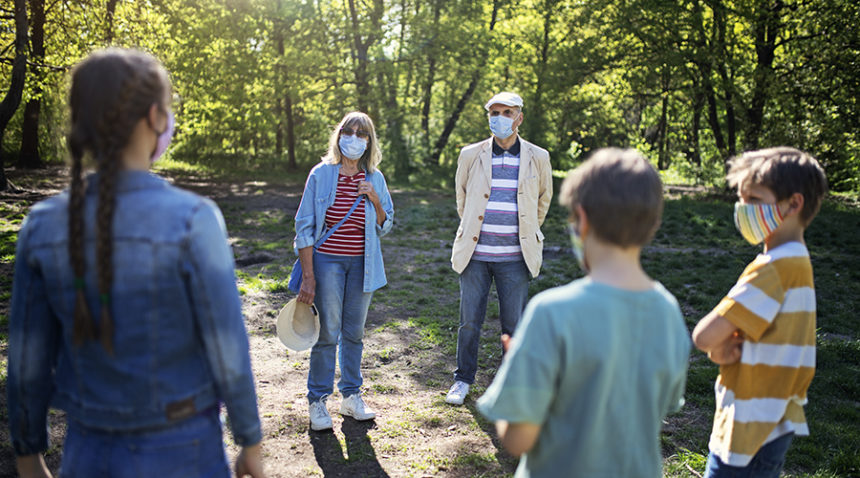For many people, the most difficult part of the coronavirus disease 2019 (COVID-2019) pandemic has been not seeing family and friends. Months of social distancing and staying at home have meant a temporary end to trips to Grandma’s or movie nights with friends.
It’s natural to want to see the people you love, but it’s tricky. The pandemic is still happening—we don’t have a vaccine or an effective treatment—and the risk of catching the coronavirus remains very real.
“It’s important to see family, but the more people you come into contact with, the more your risk increases,” says UNC Health pediatrician Elizabeth Blyth, MD.
So what do you do to keep everyone safe if you want to get together with loved ones?
The experts say: Socializing is possible, but it’s going to look and feel different than it did in the past. Outdoor gatherings where a small group of people can socialize at a distance are the best bet, but families may choose to accept some additional risk to see each other inside or overnight.
No matter the setting, “keep your physical distance as much as possible, wash your hands, don’t touch your face and wear a mask,” says UNC Health internal medicine physician Robert Hutchins, MD, MPH. “If there is someone who is particularly vulnerable in your family, try to do these things even more so to protect that person.”
Factors to consider:
– Can you socialize from a distance or outdoors? Seeing family or friends in a backyard or on a patio, and keeping 6 to 10 feet apart, is your safest bet to reduce the risk of virus transmission.
– How long are you visiting? Shorter visits, such as having a coffee on the porch, provide less opportunity for exposure to the virus than hourslong or dayslong visits.
– Are you confident that everyone has been following the “rules”? If you plan to bring your family to see another family inside their house or overnight, both households need to have practiced strict physical distancing for at least two weeks before the visit.
– Are you or your loved ones at high risk for coronavirus complications? This group includes people older than 65 and anyone with a serious underlying medical condition, such as diabetes or heart disease. High-risk people will want to be extra careful, but visits with them are not out of the question.
“If your family hasn’t seen a grandparent who you’re really close to, and you may not have months or years left to see them, it might be the right choice for your family to visit,” says Emily Sickbert-Bennett, PhD, director of UNC Medical Center Infection Prevention.
How to stay safe:
If you can’t keep your distance from your loved ones or you want to give a hug, both parties need to wear masks. Avoid kisses altogether or make modifications; ask Grandma to kiss the baby on the top of her head instead of her cheeks, for example.
“If we can keep our mouths and noses covered and keep them away from each other, minimizing direct face-to-face interaction, that would certainly be a safer way to have some physical touch with family members,” Dr. Sickbert-Bennett says.
And be prepared to call things off if someone isn’t feeling good beforehand, Dr. Sickbert-Bennett adds.
“It’s important to be really honest and aware of how you’re feeling,” she says. “We now know that symptoms of COVID-19 are not just a horrible-sounding cough. It could start with GI symptoms, or a sore throat, or headache or muscle aches, or other vague symptoms. Ask yourself if today is really the right day to interact with friends or family.”
For the latest information on COVID-19, visit the CDC website and the UNC Health COVID-19 Resources page, and follow UNC Health on Twitter, Facebook, Instagram and YouTube.

